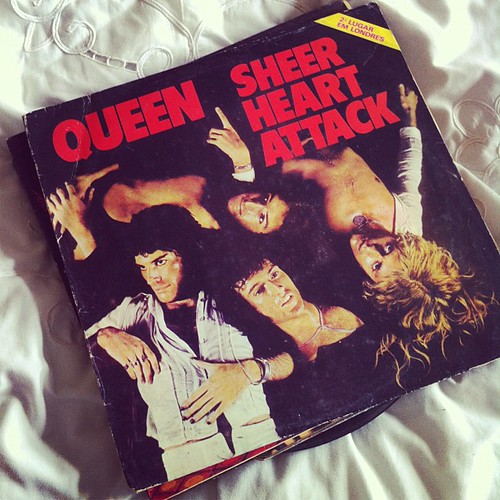
The history of Queen, a band that indelibly shaped the landscape of rock music, is a narrative rich with innovation, artistic ambition, and unprecedented global reach. Emerging from the vibrant West London music scene of the late 1960s, their journey from collegiate collaborations to worldwide superstardom is a testament to the individual brilliance and collective synergy of its members. This article delves into the formative years of Queen, exploring the pivotal moments that led to the assembly of its iconic lineup and the development of a sound that defied conventional categorization.
This in-depth exploration will illuminate the key albums, songs, and strategic decisions that propelled Queen from nascent talent to a global phenomenon by the mid-1970s. From the intricate genesis of their classic lineup to the audacious success of their early studio efforts and the revolutionary impact of “Bohemian Rhapsody,” we examine how a relentless pursuit of artistic perfection and a fearless embrace of spectacle transformed four musicians into rock royalty.
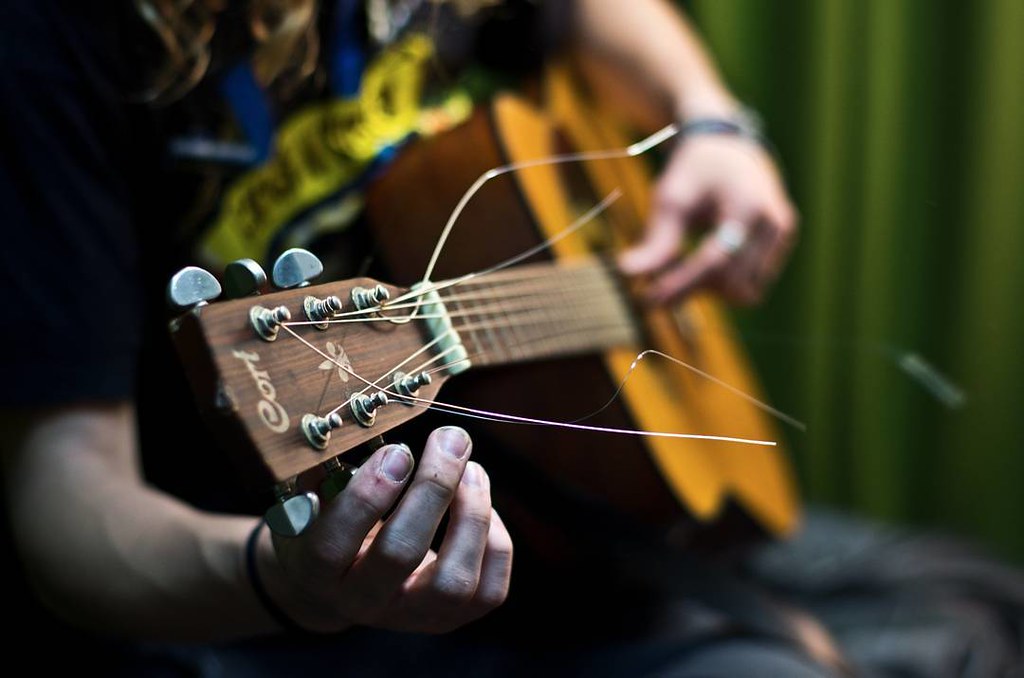
1. **The Genesis of Queen: From Smile to a New Identity.**Queen’s origins lie in late 1960s West London. Guitarist Brian May, a physics and astronomy student who built his own guitar in 1963, initially formed “1984” with singer Tim Staffell. This evolved into the group “Smile” in early 1968, featuring Staffell on bass and Roger Taylor, a dental student recruited via a college advertisement for a “Mitch Mitchell/Ginger Baker type” drummer.
At Ealing Art College, Staffell befriended Farrokh “Freddie” Bulsara, from Zanzibar and of Indian Parsi descent, who had studied fashion and graphic art. Bulsara, an ardent admirer of Smile, expressed a desire to join as lead singer, though May initially felt Staffell would not relinquish the role. Bulsara also ran a Kensington Market stall with Taylor, strengthening their connection.
In 1970, Staffell quit Smile due to musical differences and a lack of success. Bulsara was then welcomed as lead singer. He proposed renaming the group to “Queen,” which was eventually accepted with his confident assertion: “it’s wonderful, dear, people will love it.” Concurrently, Bulsara changed his surname to Mercury, inspired by his song “My Fairy King.” The group’s first gig as Queen was in Truro on June 27, 1970, with Mike Grose on bass.
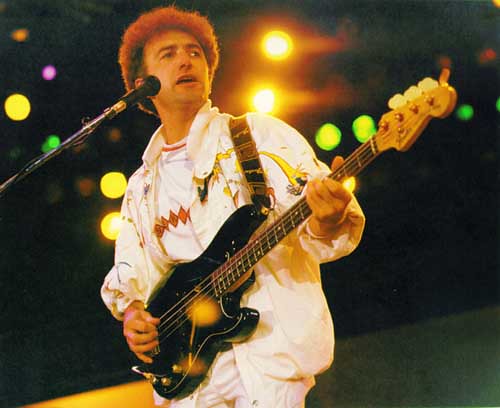
2. **The Classic Lineup Emerges: John Deacon’s Arrival and Early Demos.**Queen’s early days saw a rapid succession of bassists following their initial gig. Mike Grose departed after three shows, succeeded by Barry Mitchell for thirteen gigs, and then Doug Bogie for two. This underscored the band’s persistent search for a stable rhythm section to solidify their artistic vision.
The crucial turning point arrived in February 1971 with John Deacon’s recruitment. His quiet demeanor perfectly complemented the more flamboyant personalities of Mercury, May, and Taylor, providing a grounding influence. Beyond his personality, Deacon brought essential musical prowess as an experienced bassist and demonstrated significant skills in electronics, completing the classic lineup of Mercury, May, Taylor, and Deacon.
With the definitive lineup in place, Queen seized an unexpected opportunity. Brian May contacted Terry Yeadon, an engineer at the new De Lane Lea Studios, who needed a band to test equipment. Queen recorded five original songs—”Liar,” “Keep Yourself Alive,” “Great King Rat,” “The Night Comes Down,” and “Jesus”—as demos. Producers John Anthony and Roy Thomas Baker, impressed by “Keep Yourself Alive,” began promoting the band to record companies.
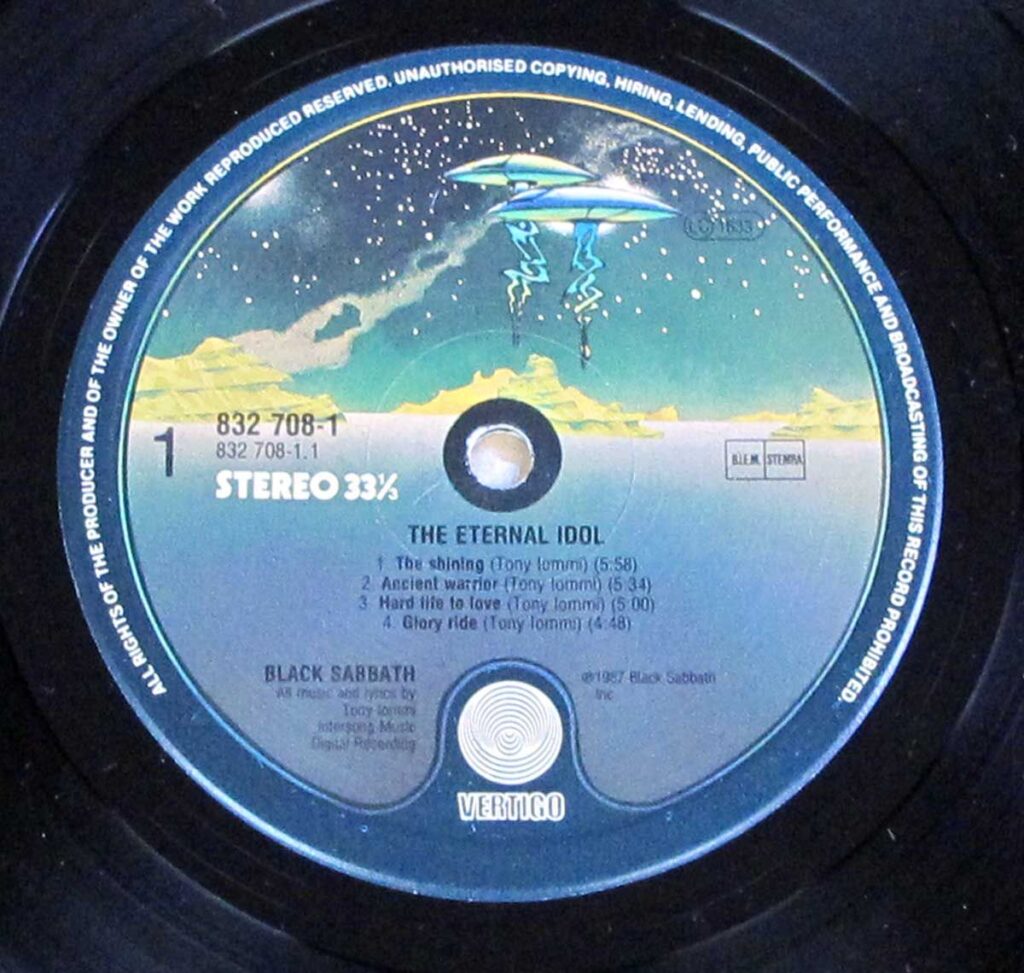
3. **Debut Album Challenges and Breakthroughs: ‘Queen’ and the Search for Identity.**Queen’s path to a record deal was not straightforward. They strategically declined Charisma Records’ offer, believing Genesis would be prioritized. Promoter Ken Testi then facilitated a management deal with Trident Studios under Neptune Productions, a subsidiary. This arrangement granted Queen crucial access to Trident’s high-tech recording facilities during off-peak hours, a period Roger Taylor famously described as “gold dust” for their development.
The band dedicated eight months in 1972 to their debut album, halting live performances. Working with co-producers John Anthony and Roy Thomas Baker at Trident, they wrestled with translating their live energy to record. The production was marked by creative tension, particularly between Brian May and the producers, over integrating technical perfection with live performance reality, resulting in “kitchen sink overproduction,” blending heavy metal and progressive rock.
Released July 13, 1973, after signing with EMI, the self-titled debut featured “Keep Yourself Alive” as its lead single. Critics like Gordon Fletcher of Rolling Stone called it “superb,” yet it struggled mainstream. Retrospectively, “Keep Yourself Alive” is now celebrated as the album’s highlight, recognized by Rolling Stone in 2008 as 31st in “100 Greatest Guitar Songs of All Time” for its dense riffing. The album eventually achieved gold certification in both the UK and US.
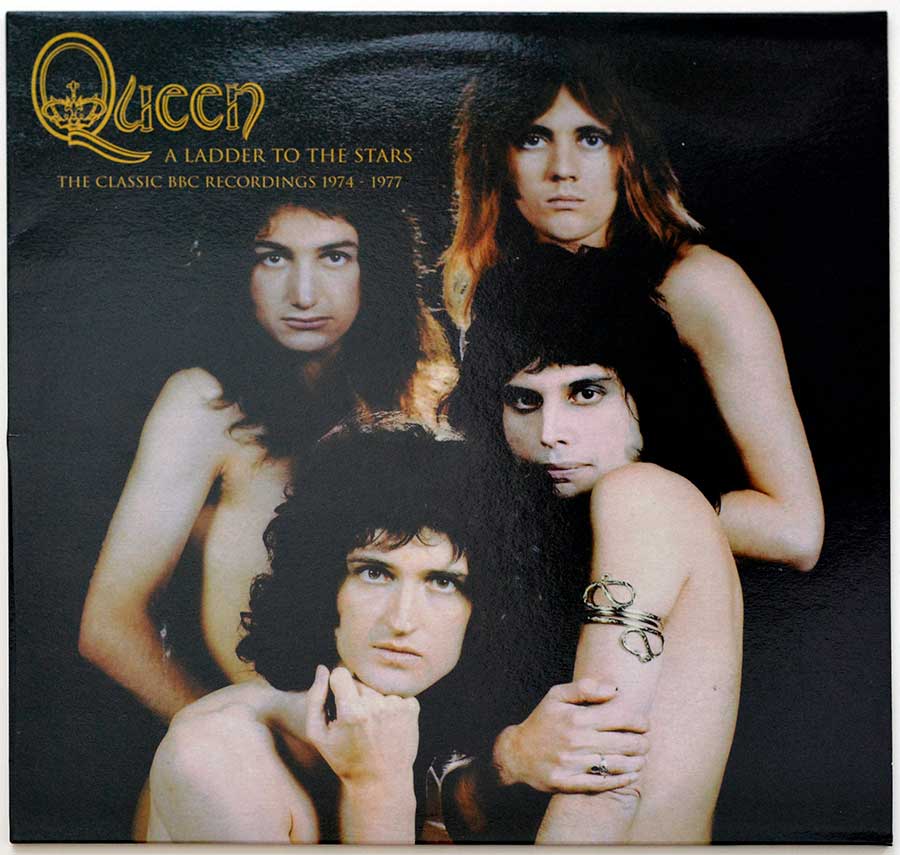
4. **Forging a Signature Sound: The Ambition of ‘Queen II’ and First Chart Success.**Queen began recording their second album, *Queen II*, in August 1973, fully utilizing regular studio time. Brian May contributed the multi-layered guitar introduction “Procession,” while Freddie Mercury penned “The Fairy Feller’s Master Stroke.” This period included extensive UK touring, supporting Mott the Hoople, steadily building their audience, culminating in two well-attended shows at the Hammersmith Odeon.
A notable incident occurred in January 1974 at Australia’s Sunbury Pop Festival. Arriving late, Queen faced jeers from a crowd expecting local acts. Despite the hostile reception, Freddie Mercury defiantly proclaimed, “when we come back to Australia, Queen will be the biggest band in the world!” This bold assertion underscored the band’s unwavering ambition and self-belief.
*Queen II*, released in March 1974, was pivotal in defining Queen’s sound. Its iconic Mick Rock cover image, inspired by Dietrich, later influenced the “Bohemian Rhapsody” video. The album reached number five on the British chart—Queen’s first UK chart entry. Mercury’s “Seven Seas of Rhye” became the lead single, reaching number 10 and securing their first hit. Characterized by a “layered” sound, complex instrumentals, and fantasy lyrics, *Queen II* has since been embraced by hardcore fans and listed in *1001 Albums You Must Hear Before You Die*.
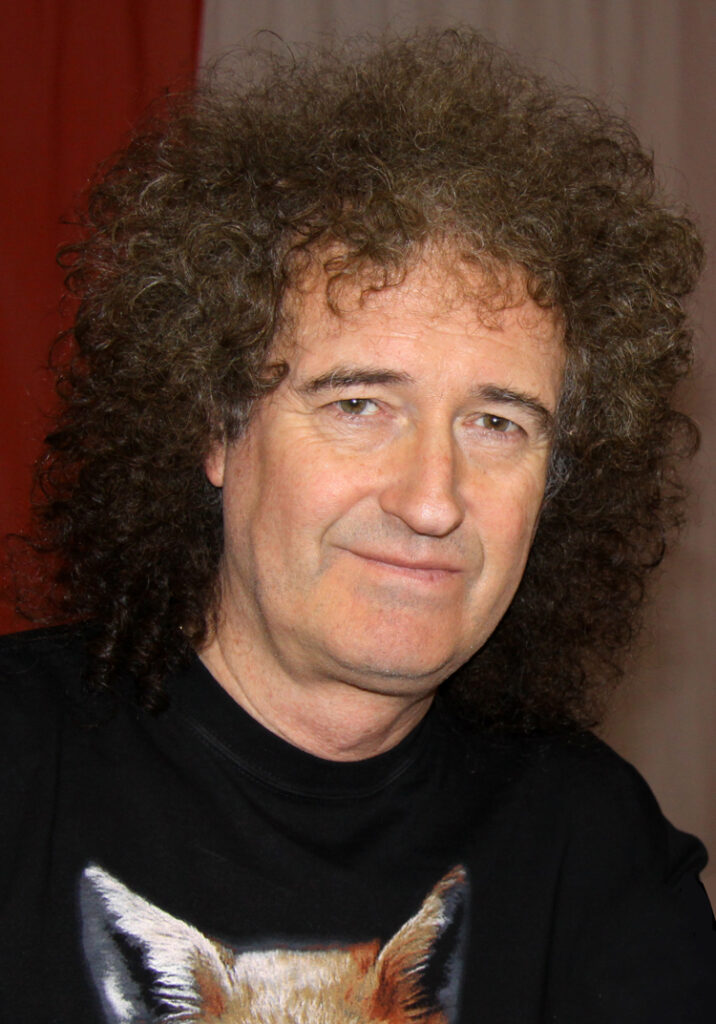
5. **International Acclaim and Genre Expansion: The Impact of ‘Sheer Heart Attack’.**Queen’s momentum was briefly interrupted in May 1974 during their first US tour, when Brian May collapsed with hepatitis, forcing cancellation. May, though initially absent from recording their third album, returned midway to contribute to a work that would mark a significant leap in their international success.
Released later in 1974, *Sheer Heart Attack* solidified Queen’s global presence, reaching number two in the UK and gold in the US, delivering their first true international success. Musically, it showcased remarkable versatility, venturing into diverse genres including British music hall, heavy metal, ballads, ragtime, and Caribbean influences. This eclectic approach demonstrated Queen’s refusal to be confined by any single genre.
The album produced standout tracks: May’s “Now I’m Here” documented the curtailed US tour, and “Brighton Rock” showcased his guitar solos. John Deacon contributed his first song, “Misfire.” The single “Killer Queen,” written by Mercury, became a massive hit, reaching number two in the UK and their first US hit at number 12. *Sheer Heart Attack* has since garnered retrospective acclaim, recognized in “The 100 Greatest British Rock Albums Ever” and “The 100 Records That Changed the World.”
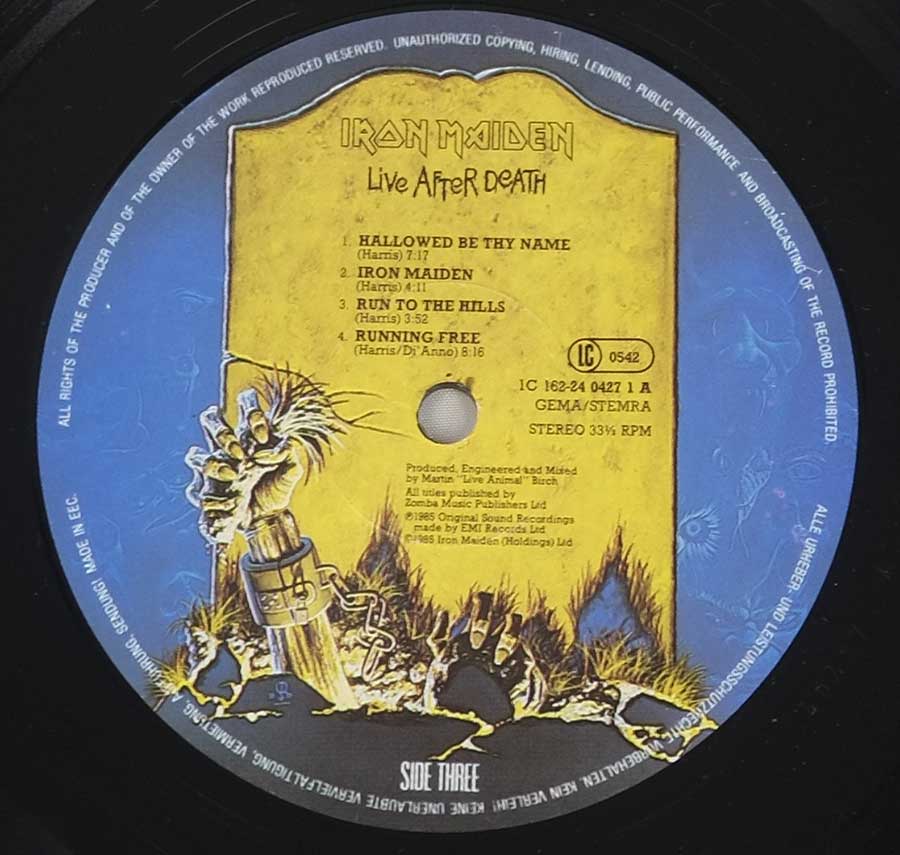
6. **A Monumental Leap: The Creation and Legacy of ‘A Night at the Opera’.**Despite growing success, Queen remained trapped in a restrictive, financially unfavorable contract with Trident Studios; members still lived in poverty. EMI lawyer Jim Beach was enlisted to help them exit, but Trident demanded £200,000. After an arduous split, Queen secured their release and sought new management, eventually choosing John Reid, Elton John’s manager, who prioritized their creative output.
Empowered, Queen embarked on their fourth album, *A Night at the Opera*, named after the Marx Brothers movie. It became the most expensive album ever produced at the time, costing £40,000 and utilizing three studios. Like its predecessor, the album showcased diverse musical styles and pushed stereo sound experimentation, demonstrating the band’s unyielding commitment to innovation.
The album’s tracklist was a mosaic of genius: Mercury contributed the scathing “Death on Two Legs” and vaudeville numbers “Lazing on a Sunday Afternoon” and “Seaside Rendezvous.” Brian May’s eight-minute epic, “The Prophet’s Song,” featured an intricate canon middle section. Mercury’s poignant ballad, “Love of My Life,” adorned with harp and overdubbed vocal harmonies, exemplified the band’s meticulous attention to detail.
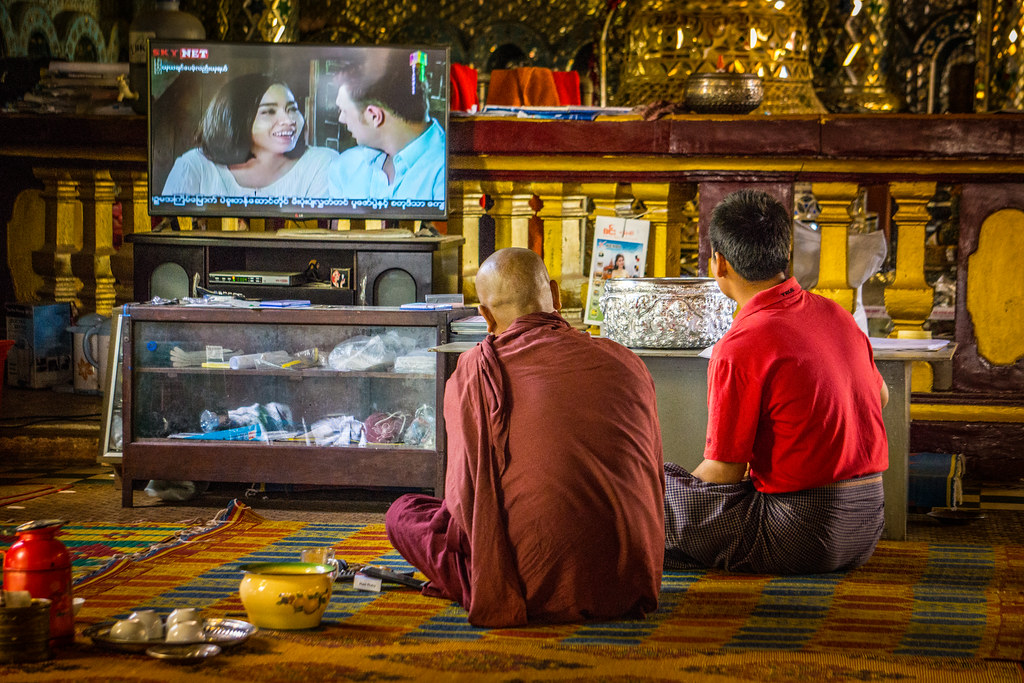
7. **The Magnum Opus: The Unprecedented Success of ‘Bohemian Rhapsody’.**At the heart of *A Night at the Opera* lay its most ambitious and celebrated track: “Bohemian Rhapsody,” originating from musical fragments Freddie Mercury conceived at Ealing College. Mercury famously unveiled its unique structure to producer Roy Thomas Baker, declaring, “This is where the opera section comes in.” The complex task of piecing the song together during recording was a collective challenge, with Baker reserving a 30-second tape section specifically for the operatic vocals.
The operatic section’s recording was an unprecedented feat, reportedly involving 180 overdubs that pushed analog technology to its limits, physically wearing thin the original tape. Despite the band’s conviction, EMI initially balked at releasing the six-minute track as a single, demanding an edit which Queen staunchly refused. The turning point came through Kenny Everett, Mercury’s close friend and Capital London radio DJ, who defied instructions by broadcasting the song fourteen times over a single weekend, generating overwhelming public demand.
The release of “Bohemian Rhapsody” created an unstoppable phenomenon. It soared to number one in the UK for nine consecutive weeks, becoming the third-best-selling single in UK history and the best-selling commercial single. Globally, it reached number nine in the US; uniquely, it sold a million copies on two separate occasions, and became the Christmas number one twice. Voted the greatest song of all time in three polls, its Bruce Gowers-directed music video was equally revolutionary, essentially inventing the modern music video and contributing to *A Night at the Opera*’s triple-platinum status in the US.
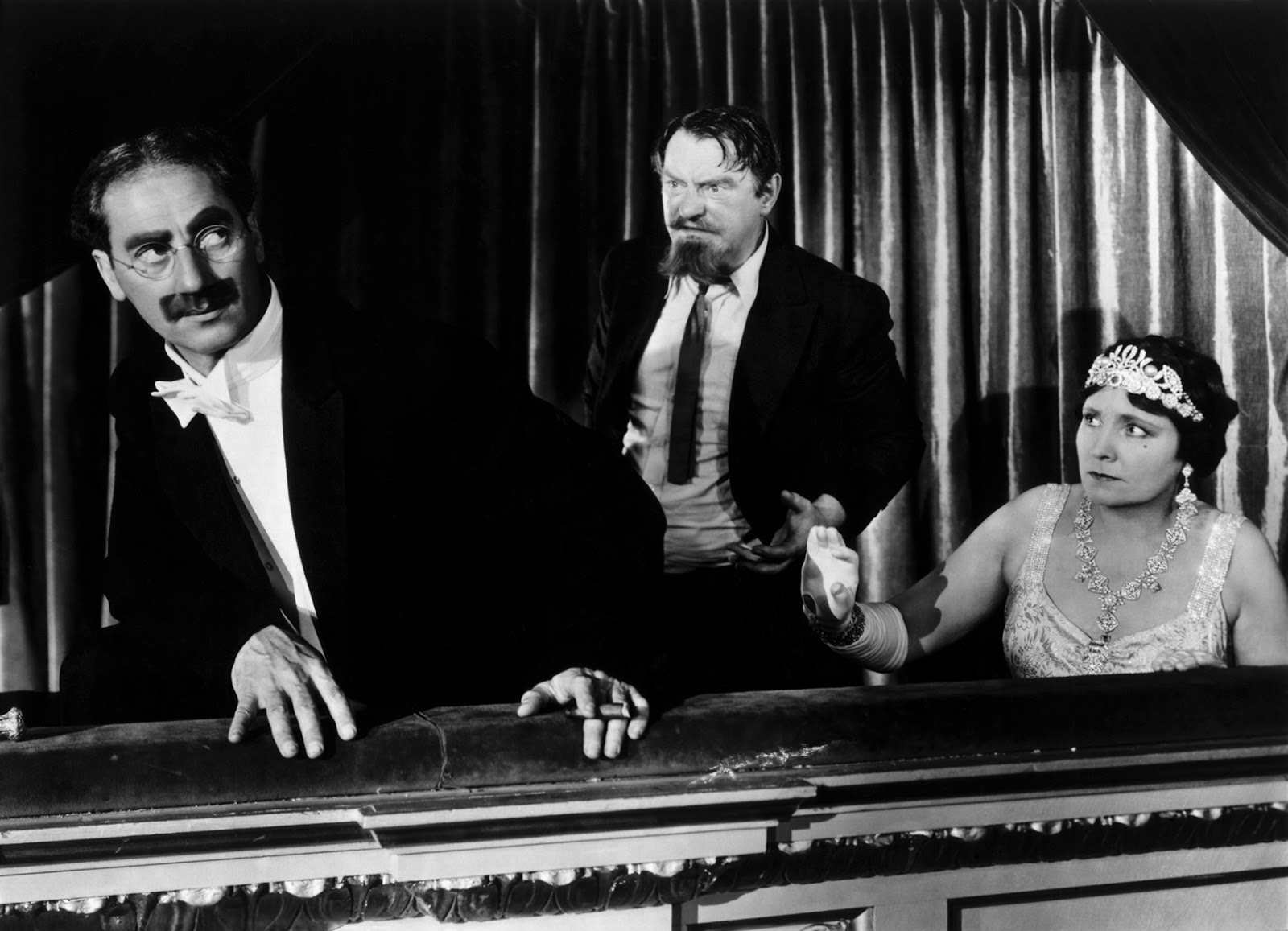
8. **Post-Opera Ambitions: *A Day at the Races* and Stadium Dominance (1976-1977).**By 1976, Queen was back in the studio, recording *A Day at the Races*, an album often perceived as a thematic and stylistic sequel to its groundbreaking predecessor, *A Night at the Opera*. Like its forerunner, it borrowed its title from a Marx Brothers movie, and its cover design notably mirrored the Queen logo established on *A Night at the Opera*. The album marked a shift in production, with the band self-producing with assistance from Mike Stone, rather than working with Roy Thomas Baker.
*A Day at the Races* yielded significant commercial and artistic triumphs. The gospel-inspired track “Somebody to Love,” featuring Freddie Mercury, Brian May, and Roger Taylor multi-tracking their voices to create a compelling gospel choir effect, soared to number two in the UK and number thirteen in the US. Brian May’s heavier “Tie Your Mother Down” quickly became a celebrated staple of their energetic live shows. Musically, the album was widely regarded by both fans and critics as a robust effort, achieving number one status in the UK and Japan, and reaching number five in the US, further solidifying their global presence.
Demonstrating their burgeoning capacity for large-scale performances, Queen played a landmark free concert in Hyde Park, London, on September 18, 1976, organized by entrepreneur Richard Branson. This event established a new attendance record for the park, with an estimated 150,000 people in the audience, underscoring their immense popularity. Brian May particularly cherished the experience, having attended earlier concerts at the same venue, including the inaugural event featuring Pink Floyd.
The band’s escalating profile was also highlighted by an unintended controversy in December 1976. Queen was scheduled as a guest on London’s *Today* programme but withdrew at the last minute. Their replacement, fellow EMI labelmate the Sex Pistols, proceeded to give a now-infamous expletive-laden interview with host Bill Grundy, a moment that inadvertently underscored the shifting cultural landscape of British music. During *The A Day at the Races Tour* in 1977, Queen performed sold-out shows at Madison Square Garden in New York, supported by Thin Lizzy, and concluded the tour with two commemorative concerts at Earls Court, London, celebrating Queen Elizabeth II’s Silver Jubilee, featuring a £50,000 crown-shaped lighting rig.

9. **Global Anthems and Diverse Explorations: *News of the World* and *Jazz* (1977-1978).**Queen’s sixth studio album, *News of the World*, released in 1977, proved to be another commercial juggernaut, achieving four-times platinum status in the US and twice in the UK. This album was strategically crafted with live performance in mind, giving rise to two of rock’s most universally recognized anthems: “We Will Rock You” and the powerful rock ballad “We Are the Champions.” Both songs quickly transcended their origins to become enduring international sports anthems, with “We Are the Champions” notably reaching number four in the US, cementing their iconic status.
The impact of *News of the World* was immediately evident on its accompanying tour, which commenced in November 1977. Robert Hilburn of the *Los Angeles Times* lauded this concert tour as the band’s “most spectacularly staged and finely honed show,” reflecting their growing mastery of stadium rock theatrics. Their continued dominance in the US market was affirmed by selling out two more shows at Madison Square Garden, earning them the Madison Square Garden Gold Ticket Award in 1978 for surpassing 100,000 unit ticket sales at the prestigious venue.
In 1978, Queen released *Jazz*, an album that, despite its title, maintained a diverse rock sound. It peaked at number two in the UK and number six on the Billboard 200 in the US. The album featured the popular double-sided singles “Fat Bottomed Girls” and “Bicycle Race.” While initial critical reviews of *Jazz* were somewhat mixed, retrospective assessments have generally become more favorable, recognizing its contributions to the band’s expansive catalogue.
Another distinctive track from *Jazz*, “Don’t Stop Me Now,” showcased the band’s signature exuberant vocal harmonies, further demonstrating their capacity for intricate vocal arrangements. The year 1978 saw Queen undertaking extensive tours across the US and Canada, followed by significant performances throughout Europe and Japan in 1979, solidifying their consistent global touring presence.
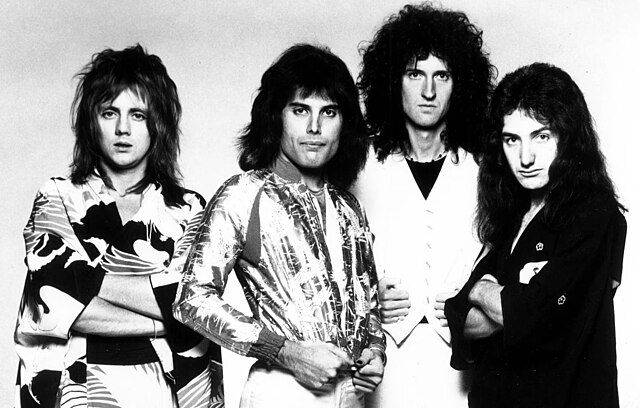
10. **Venturing into New Sounds: *The Game* and Chart Supremacy (1979-1980).**The close of the 1970s saw Queen release the highly successful single “Crazy Little Thing Called Love.” This rockabilly-inspired track, reminiscent of Elvis Presley’s style, quickly achieved top 10 status in numerous countries, notably topping the Australian ARIA Charts for seven consecutive weeks and becoming Queen’s first number one single in the US, where it held the Billboard Hot 100 for four weeks. Remarkably, Freddie Mercury, having written the song on guitar and played rhythm on the record, performed rhythm guitar live for the first time during concerts. On December 26, 1979, Queen also played the opening night of the Concert for the People of Kampuchea in London, responding to a request from organizer Paul McCartney.
Queen entered the 1980s with their album *The Game*, a pivotal release that delivered two US number one singles: “Crazy Little Thing Called Love” and “Another One Bites the Dust.” The latter’s release as a single was famously suggested by Michael Jackson backstage after attending a Queen concert in Los Angeles. It subsequently spent three weeks at number one in October 1980, underscoring the track’s broad appeal.
*The Game* achieved massive commercial success, topping the Billboard 200 for five weeks and selling over four million copies in the US. The album also marked a significant stylistic departure for Queen, as it was the first to feature a synthesizer. Previously, their albums famously bore a “No Synthesisers!” sleeve note. This note, producer Roy Thomas Baker later clarified, was not an anti-synth stance but an effort to communicate that the albums’ complex, multi-layered solos were achieved through guitars, correcting common assumptions by record company executives. Queen continued their live momentum in September 1980 with three sold-out shows at Madison Square Garden.
In 1980, Queen also contributed to cinema with the soundtrack they recorded for the film *Flash Gordon*. Their continued mainstream recognition was highlighted at the 1981 American Music Awards in January, where “Another One Bites the Dust” won the award for Favorite Pop/Rock Single, and Queen received a nomination for Favorite Pop/Rock Band, Duo, or Group.
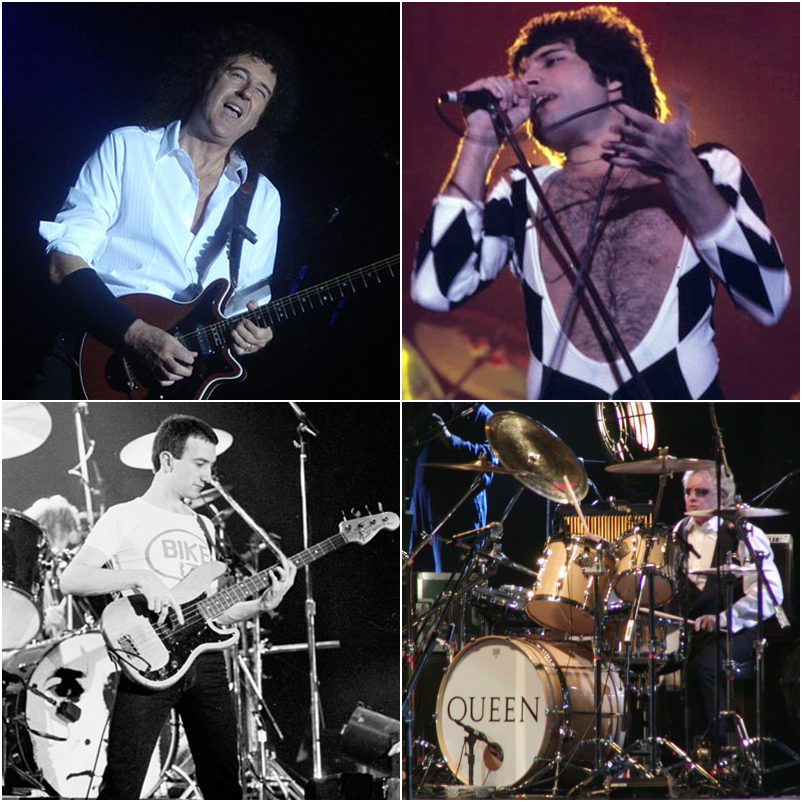
11. **Conquering Continents: Queen’s Unprecedented Stadium Tours (1981).**In February 1981, Queen embarked on the South American leg of The Game Tour, making history as the first rock band outside the Americas to perform in stadiums across Latin America. This ambitious undertaking placed them under intense scrutiny, as the entire music industry watched to see if their bold plans would materialize. *Classic Rock* magazine noted the immense pressure and anticipation surrounding these pioneering concerts, recognizing their potential to redefine global touring.
The tour included five shows in Argentina, with one concert in Buenos Aires drawing the largest single concert crowd in Argentine history, estimated at 300,000 attendees. In Brazil, Queen performed two monumental concerts at the Morumbi Stadium in São Paulo, playing to over 131,000 people on the first night—then the largest paying audience for a single band globally—and more than 120,000 the following night. In a region largely under military dictatorships, the band’s promoter for their first shows in Buenos Aires’ Vélez Sarsfield Stadium declared, “For music in Argentina, this has been a case of before the war and after the war. Queen have liberated this country, musically speaking.” Their second Vélez Sarsfield show was broadcast nationally and viewed by over 30 million people, and backstage, they famously met footballer Diego Maradona.
The ballad “Love of My Life,” topping charts in Brazil and Argentina, became a signature moment of their South American concerts, with Freddie Mercury often conducting the audience as they sang the song by heart, their English delivery reportedly “word-perfect.” Later that year, Queen performed for over 150,000 people across two dates in Mexico, at Monterrey and Puebla. Though commercially successful, these gigs faced significant planning and facility challenges, marked by audiences throwing projectiles onto the stage, leading Mercury to conclude the final show with a frustrated, “Adios, amigos, you s!” On November 24 and 25, Queen performed two nights at the Montreal Forum, Quebec, Canada, with one of Mercury’s notable performances of “Save Me” from *The Game* being captured for the live album *Queen Rock Montreal*.
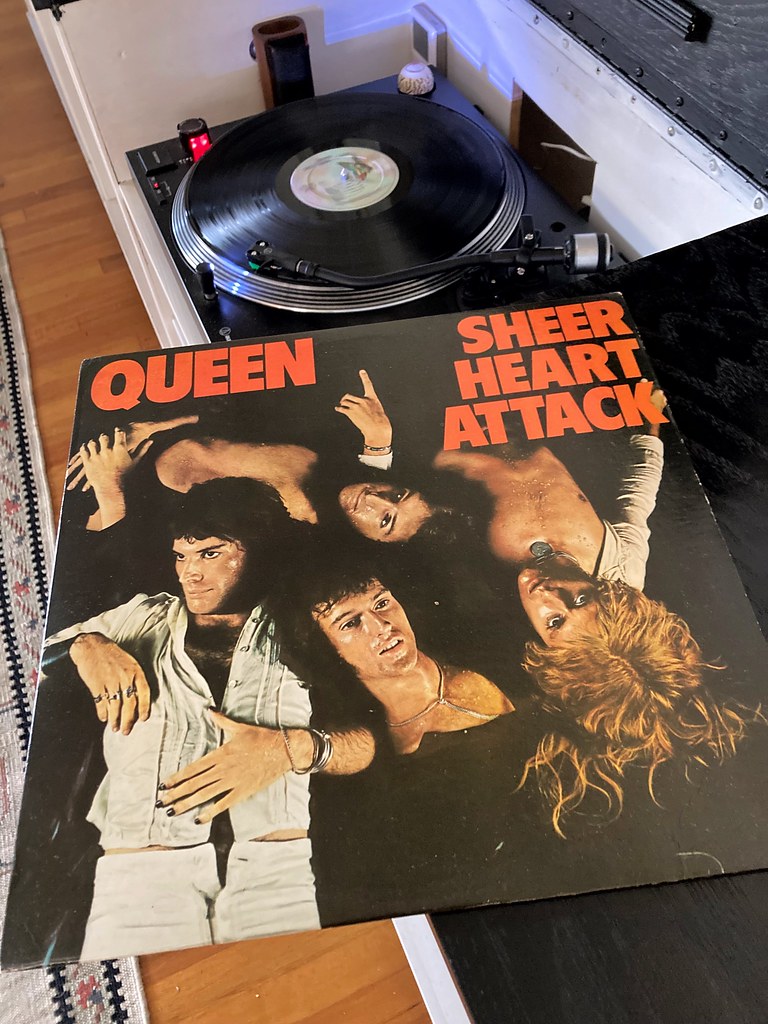
12. **Collaborations and Controversies: “Under Pressure” and *Hot Space* (1981-1982).**In 1981, Queen embarked on a spontaneous and ultimately iconic collaboration with David Bowie on the single “Under Pressure.” This first-time collaboration with another artist occurred serendipitously when Bowie dropped by the studio while Queen was recording. Mercury and Bowie independently crafted their vocal parts, each contributing unique ideas to the track. The resultant single quickly ascended to the top of the UK charts, becoming a monumental success that showcased an unexpected synergy between two rock titans.
In October, Queen released their first compilation album, *Greatest Hits*, a comprehensive showcase of their highlights from 1974 to 1981. This album has achieved unparalleled commercial success, becoming the best-selling album in UK chart history and the only album to sell over seven million copies in the UK. By July 2022, it had spent over 1000 weeks in the UK Album Chart, with *The Telegraph* estimating that approximately one in three UK families own a copy. The album is also certified nine times platinum in the US and has spent over 600 weeks on the US Billboard 200 by August 2024, selling over 25 million copies worldwide.
1982 saw the release of *Hot Space*, an album that marked a significant departure from Queen’s established seventies sound. It incorporated a fusion of pop rock, dance, disco, funk, and R&B elements. Much of the album’s recording took place in Munich during what Brian May described as one of the most turbulent periods in the band’s history, lamenting, “We weren’t getting along together. We all had different agendas. It was a difficult time for me, personally – some dark moments.”
Internal tensions surfaced, with Freddie Mercury and John Deacon embracing the new soul and funk influences, while Roger Taylor and Brian May expressed less enthusiasm. May and Taylor were particularly critical of the influence of Mercury’s personal manager, Paul Prenter, who Mack, Queen’s producer, noted “loathed rock music” and was constantly in Mercury’s ear during the *Hot Space* sessions. Brian May also lambasted Prenter for dismissing the importance of radio stations and denying the band access to Mercury, stating, “this guy, in the course of one tour, told every record station to off.” Roadie Peter Hince added, “None of the band cared for him [Prenter], apart from Freddie,” attributing Mercury’s favoritism to “misguided loyalty.” Despite the friction, Mercury’s close bond with Mack’s family during these Munich sessions led him to become godfather to Mack’s first child. Q magazine later listed *Hot Space* as one of the top fifteen albums where “great rock acts lost the plot,” though it still reached number four in the UK.
The *Hot Space* Tour exposed the band to audiences largely unreceptive to their new material, leading to instances such as Freddie Mercury’s defiant retort to hecklers in Frankfurt: “If you don’t want to listen to it, go home!” Morgan Fisher of Mott the Hoople joined as an additional touring keyboardist. Planned shows at Arsenal Stadium and Old Trafford were cancelled due to Pope John Paul II’s UK tour, necessitating a relocation to the Milton Keynes Bowl and Elland Road, Leeds. The Milton Keynes concert was filmed by Tyne Tees Television and later released on DVD. On September 14 and 15, 1982, Queen performed their final two US gigs with Freddie Mercury on lead vocals, playing at The Forum in Inglewood, California. Fisher was replaced by Fred Mandel for the North American shows. The band ceased touring North America after the *Hot Space* Tour due to waning success, though they made their only American television appearance during the eighth-season premiere of *Saturday Night Live* on September 25, 1982, marking their last public performance in North America with their frontman. This decline in US popularity has been partially linked to homophobia, as Mikal Gilmore of *Rolling Stone* observed fans throwing razor blades onstage during their 1980 American tour, disliking “what they perceived as a brazenly gay rock & roll hero.” The year concluded with a Japanese tour.
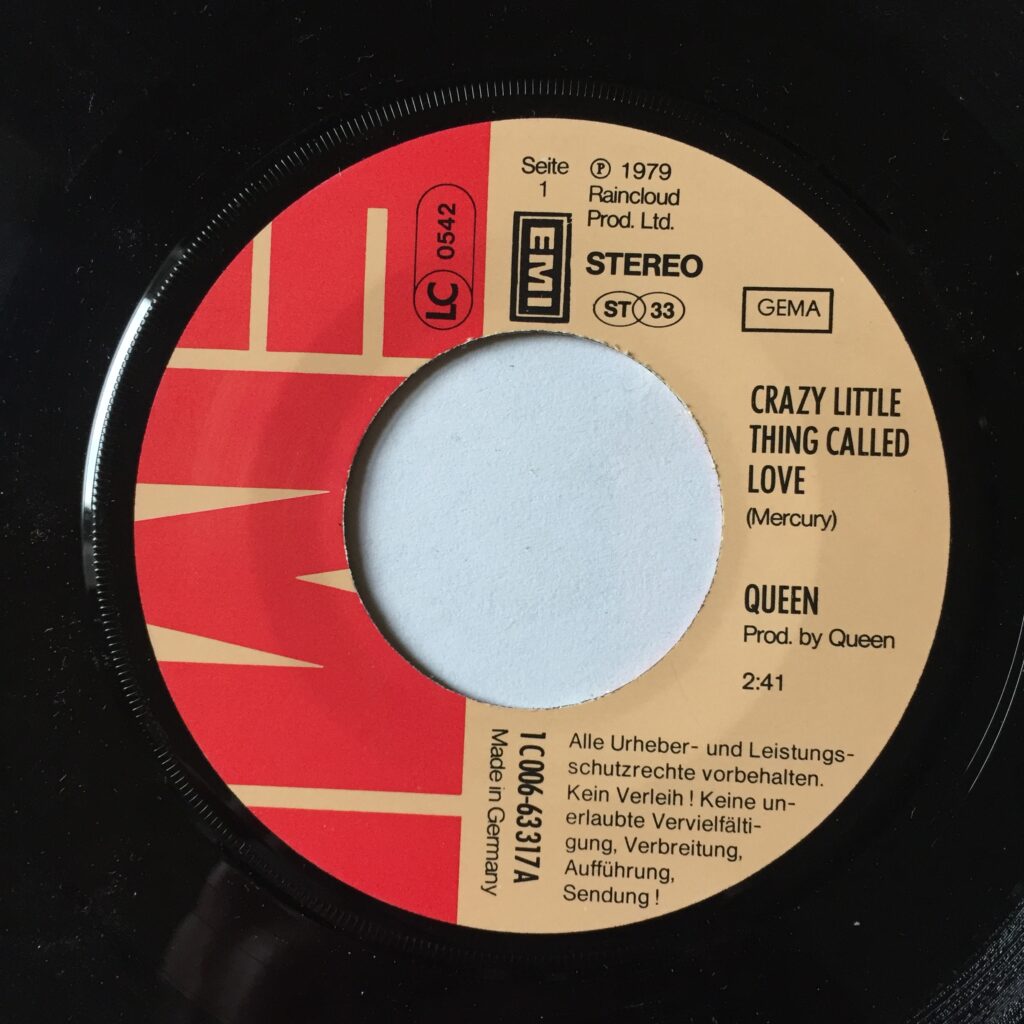
13. **Resilience Amidst Challenges: *The Works* and the Sun City Controversy (1983-1984).**Following the conclusion of the *Hot Space* Tour in November 1982 with a concert in Tokorozawa, Japan, Queen decided to take a substantial break. Brian May candidly reflected on this period, admitting, “we hated each other for a while,” highlighting the internal strain the band had endured. During this hiatus, several members pursued solo endeavors; Roger Taylor released his second solo album, *Strange Frontier*, and Brian May collaborated with Eddie Van Halen on the mini-album *Star Fleet Project*. After nine months, the band reconvened to record a new album at Record Plant Studios in Los Angeles and Musicland Studios in Munich. This period also saw Queen transition from Elektra Records, their label in several key international markets, to EMI/Capitol Records.
In February 1984, Queen released their eleventh studio album, *The Works*. The album spawned several hit singles, including “Radio Ga Ga,” which offered a nostalgic defense of the radio format, “Hammer to Fall,” and the enduring anthem “I Want to Break Free.” *Rolling Stone* magazine hailed the album as “the Led Zeppelin II of the eighties,” a testament to its perceived power and impact. In the UK, *The Works* achieved triple-platinum status and impressively remained in the albums chart for two years, demonstrating its lasting appeal to their domestic audience.
However, the album’s reception in the US was notably less successful. This underperformance was partially attributed to issues with their new label, Capitol Records, which had recently severed ties with its independent promotions teams following a government report on payola. A further obstacle arose from the music video for “I Want to Break Free,” which featured the band members in cross-dressing attire, spoofing the British soap opera *Coronation Street*. This video proved controversial and was subsequently banned by MTV.
The concept for the “I Want to Break Free” video originated from Roger Taylor, suggested by his girlfriend. He explained to *Q* magazine, “We had done some really serious, epic videos in the past, and we just thought we’d have some fun. We wanted people to know that we didn’t take ourselves too seriously, that we could still laugh at ourselves.” Despite this intention, director David Mallet recalled Freddie Mercury’s initial reluctance, commenting, “it was a hell of a job to get him out of the dressing room,” reflecting the unexpected backlash the creative choice generated.
That year, Queen commenced The Works Tour, which notably introduced keyboardist Spike Edney as an additional live musician. The tour included nine sold-out dates in October in Bophuthatswana, South Africa, at the arena in Sun City. Upon their return to England, the band faced considerable public outrage, having performed in South Africa during the peak of apartheid and in direct violation of worldwide divestment efforts and a United Nations cultural boycott. The band defended their actions by asserting they were playing music for their fans in South Africa, emphasizing that the concerts were performed before integrated audiences. As a philanthropic gesture, Queen donated to a school for the deaf and blind, but they were nonetheless fined by the British Musicians’ Union and placed on the United Nations’ blacklisted artists. In 2021, Roger Taylor publicly voiced his regret for the decision to perform at Sun City, acknowledging that “we went with the best intentions, but I still think it was kind of a mistake.”

14. **Global Triumphs and Unwavering Acclaim (1985).**Queen’s electrifying performance at the first Rock in Rio festival in January 1985 marked a significant highlight in their journey to stadium rock giants. They headlined two nights in Rio de Janeiro, commanding an audience of over 300,000 people each night. This monumental event was described by *The Boston Globe* as a “mesmerising performance,” showcasing the band’s unparalleled ability to captivate massive crowds and reaffirming their status on the world stage.
Queen’s electrifying performance at the first Rock in Rio festival in January 1985 marked a significant highlight in their journey to stadium rock giants. They headlined two nights in Rio de Janeiro, commanding an audience of over 300,000 people each night. This monumental event was described by *The Boston Globe* as a “mesmerising performance,” showcasing the band’s unparalleled ability to captivate massive crowds and reaffirming their status on the world stage.
The sheer scale and success of Rock in Rio further amplified Queen’s international presence. Highlights from these two unforgettable nights were captured and released on VHS as *Queen: Live in Rio*, subsequently broadcast on MTV in the US, allowing their electrifying energy and powerful stage presence to reach an even wider global audience and solidify their image as a premier live act.
Following these triumphant performances, Queen concluded their extensive Works Tour in April and May 1985 with sold-out shows across Australia and Japan. This period underscored their unwavering appeal and consistent ability to fill arenas and stadiums worldwide, demonstrating a powerful resurgence in their global stature after navigating earlier challenges and controversies. As one observer succinctly put it, reflecting on their exceptional prowess and command over their audience, “Queen were absolutely the best band of the…”
Read more about: The Untamed Spirit: 14 Actors Who Forged the Soul of ’70s and ’80s Action Cinema
From their intricate beginnings in London’s burgeoning music scene to their unprecedented global stadium dominance, Queen’s journey is a testament to relentless artistic pursuit and a fearless embrace of innovation. They transcended musical categories, defied industry expectations, and confronted controversy with a singular vision. Through every complex harmony and every stadium-rock anthem, Queen forged an indelible legacy, not merely as musicians, but as architects of a sound that reshaped rock music and continues to resonate across generations, cementing their place as true rock royalty. ” , “_words_section2”: “1896



